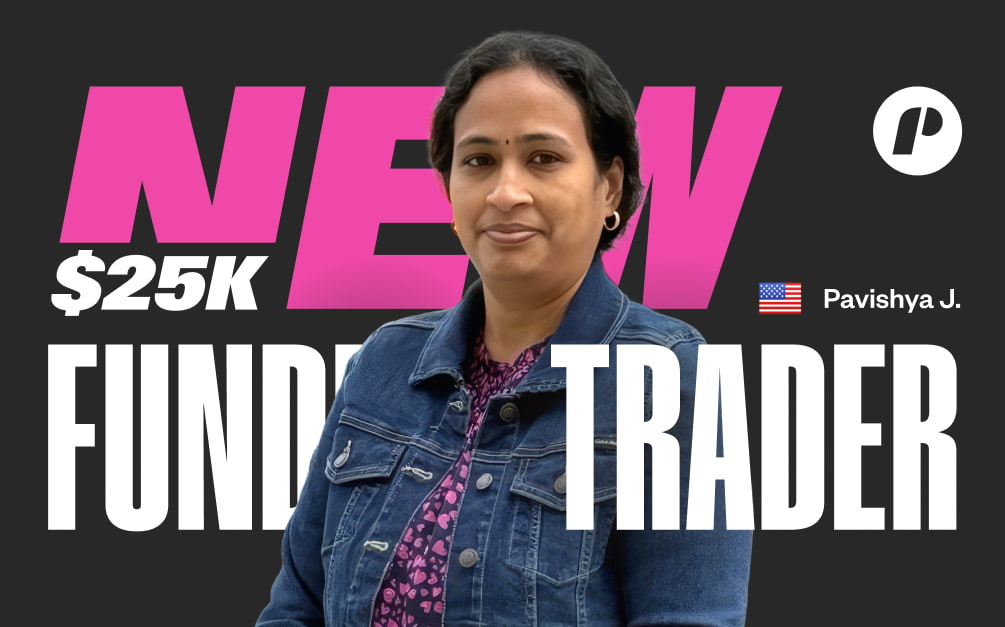
Introduction
We find ourselves talking about technology a lot when it comes to online trading, and there are very good reasons for that. After all, other than making online trading possible in the first place, the advancement of technology has also provided traders with the practical tools to fine-tune their strategy to virtual perfection. The different order types that brokers and prop firms offer to their traders are excellent examples of these tools.
Each order type allows traders to set the conditions that dictate how, when, and/or at what price an asset should be bought or sold according to their trading strategy. This allows for positions to be opened and closed automatically, thus reducing the need for constant screen monitoring.
In today’s article, we’ll take a look at the five most common order types available to retail traders while also learning how and when to each of them.
Ready?
Let’s get on with it!
The 5 most popular order types available to traders
The five order types we are about to explore are Market Orders, Limit Orders, Stop Loss and Take Profit Orders, Stop Limit Orders, and Trailing Stop Orders.
Remember, each order type serves a unique purpose and its use can significantly affect your trading strategy, risk management, and overall success in trading the market.
-
Market Orders
Easy, quick, and direct
A Market Order is the simplest and most straightforward order type. When you place a market order, you are instructing your broker to buy or sell a security immediately at the best available price. This order type is advantageous when you want to enter or exit a position quickly, especially in a rapidly moving market.

Say you are trading Microsoft stock (MSFT) and your strategy tells you it’s time to open a long or a short position right now because you think price could start moving in your favor imminently. In a case like this, a Market Order’s instant execution may just be what you need.However, there are some caveats with Market Orders.
Because market orders are executed at the best current market price, you may not have control over the exact price at which your trade is executed.
In volatile markets, this can lead to slippage, where the final execution price differs from the one you were expecting to pay. Despite this, market orders are often the go-to choice for traders prioritizing speed over precision. -
Limit Orders
Control over price
When the trading strategy suggests a retracement and opening a trade at a different price than the current one, the use of Limit Orders allows traders to specify the exact price at which they want to buy or sell an asset.
By setting a buy Limit Order, you are instructing your broker to execute the trade only at the price you choose or lower (but not higher). Vice versa, by using a Sell Limit Order, you are ensuring your asset won’t be sold for a price lower than the one of your choosing.Traders usually use limit orders when they believe price might pull back to a certain level before moving in their desired direction.

Let’s go back to the same Microsoft (MSFT) hourly chart but, in this example, let’s say you are bullish but your strategy suggests a small retracement before rising in your favor. Let’s say you decided to draw Fibonacci Retracements on your chart and identify a likely bull back to the $426.17 level. Well, now you can either wait glued to your screen until price retraces to the level you expect or you can set a limit order at that price and go make yourself a coffee. Your broker will execute your trade at the price you’ve set or lower.The downside, of course, is that limit orders are not guaranteed to be executed. If the market price does not reach your limit order price, your trade will not go through, which means you might miss out on some opportunities.
-
Stop Loss Order
The Safety Net
Stop loss orders (or stop orders) are particularly useful for managing the risk associated with each trade and, while other order types might seem a little more complex to some, virtually all traders understand how a stop loss order works. Those who don’t, usually pay the price for it.
In simple terms, a stop order is an instruction to your broker to close a position (or part of it) if and when price moves against you and reaches a certain level (called the “stop price”).
To execute your order, once the stop price is breached, your broker will immediately convert your stop order into a market order which will be executed at the best available price.
For this next example, we’ll look at Tesla’s (TSLA) hourly chart. Let’s say you are bullish on Tesla and predict that price will keep rising. However, you acknowledge the possibility of a pullback to the resistance level and believe that if price drops further than that resistance, it might reverse trend and carry on dropping.
In a casa like this is advisable to set a stop loss just underneath the resistance level to reduce any risk.
-
Take Profit Order
The profit realizer
Just like the stop loss order, a take profit order is an instruction to your broker to close a position (or part of it) when price reaches a certain level. However, while a stop loss is triggered when price moves against you, a take profit order is triggered when price moves in your favor and, while a stop loss is used to limit risk on a losing trade, the take profit order is used to realize the profit before a potential reversal.

Let’s go back to the scenario described in Image 3. You are bullish on Tesla, you opened a long position and also set a stop order below the nearest resistance level. Now, setting a take profit order too would allow you to automatically “cash in” the profit your trade would make you if price reaches the level you’ve set.
-
Stop-Limit Order
The hybrid approach
Stop-limit orders combine the features of stop orders and limit orders.
To set a stop-limit order, a trader needs to set a stop price to activate the order and a limit price to specify the maximum price at which they are willing to buy or sell. In other words, the stop price works as a trigger that switches on the limit price order.
To better explain how a stop-limit order works and when it is most useful, let’s take a look at this example. Let’s say you have studied Apple’s (AAPL) hourly chart and come to the conclusion that if price drops further than its latest low, it is bound to keep dropping and begin a bearish trend. If you intend to wait to see if price actually does drop all the way to the latest low for confirmation before opening a short trade – as we learned today – you cannot use a Market Order (since it would execute immediately at the current price) nor a Limit Order (as – in a short trade – they execute at a price equal or higher than the limit price you set and would, therefore, also execute immediately).
A Stop-Limit Order, on the other hand, would allow you to instruct your broker to create a limit order at your limit price only if and when price reaches the stop price.
-
Trailing Stop Order
Yes, we said five but there is actually a sixth
A trailing stop order is an advanced order type that allows traders to lock in profits while giving their profits some room to grow.
It automatically adjusts the stop price at a specified percentage or dollar amount below the market price for buy orders (or above for sell orders).
Bcause it more advanced and more complex, we decided to dedicate to trailing stop orders an entire article per se. So, if you want to keep mastering the art of trade and risk management through the use of different order types, don’t miss our next article on Trailing Stop Orders!
Hope this helps.
If you liked this post make sure to share it!





